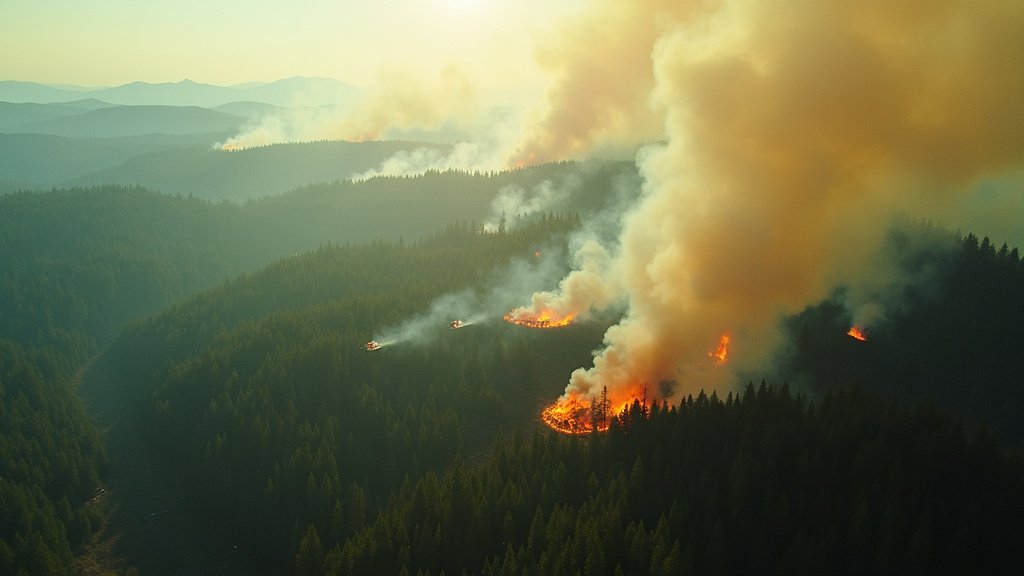Oregon S Mild Fire: The 2025 wildfire season in Oregon has officially drawn to a close, revealing a season characterized by an increased number of fire ignitions yet a dramatically reduced acreage burned. State forestry officials credit this success to a multi-pronged approach involving aggressive initial attack strategies, swift resource deployment, dedicated firefighting efforts, and a timely shift to cooler, wetter fall weather patterns. As of October 16, 2025, the Northwest Interagency Coordination Center (NWCC) reported 2,569 fires across Oregon, consuming approximately 288,774 acres, a testament to effective wildfire containment Oregon. This contrasts sharply with the devastating 2024 season, where nearly 1.9 million acres were lost. Despite an uptick in fire starts on lands protected by the Oregon Department of Forestry (ODF)—potentially around 100 more than in 2024—early and effective containment measures prevented widespread destruction, ensuring this Oregon wildfire 2025 season became known as Oregon S Mild Fire.
Oregon S Mild Fire: Aggressive Tactics and Dedicated Firefighters
Officials from the Oregon Department of Forestry (ODF) highlighted the pivotal role of their firefighting teams in managing the higher volume of ignitions during the 2025 season, a key factor in achieving Oregon S Mild Fire. Michael Curran, ODF Fire Protection Division Chief, stated that an impressive 94 percent of fires on ODF-protected lands were extinguished at 10 acres or less, showcasing excellent Oregon fire protection and strong ODF fire statistics. This remarkable statistic underscores the effectiveness of rapid response and containment protocols, ensuring that potential large-scale fires were nipped in the bud. ODF spokeswoman Jessica Neujahr attributed this success to the unwavering dedication of the firefighting efforts Oregon personnel. Buoyed by projections that indicated a potential fire danger similar to 2024, ODF teams adopted a proactive stance, prioritizing swift action on every new ignition, a hallmark of the aggressive initial attack strategy that defined this Oregon S Mild Fire season. Governor Tina Kotek’s invocation of the Emergency Conflagration Act on eight occasions further facilitated the mobilization of crucial firefighters and resources to combat developing blazes.
Favorable Weather Conditions Supported Oregon S Mild Fire
While initial forecasts had warned of a potentially catastrophic season that could mirror the severity of 2024, a significant shift in weather patterns proved to be a vital mitigating factor for Oregon S Mild Fire. Mid-season rains and the consistent arrival of fall weather—characterized by cooler temperatures and shorter days—helped to dampen fuels and reduce the overall fire risk across the state, demonstrating the positive fall weather impact fires. Natalie Weber, a spokesperson for the Southwest Oregon District, noted the welcome absence of the early summer heatwave that had plagued previous years, contributing to slower fire growth. Widespread rain experienced throughout various districts ultimately allowed the Oregon Department of Forestry to officially declare the fire season end by mid-October. The 2025 fire season saw a total of 1,135 fires on ODF-protected lands, burning a significantly reduced burned acreage compared to prior years.
Further reading: Related News on Google




